 | John D. Williams - Algebra - 1840 - 216 pages
...by 5, and the second by 2, and then subtracting the second from the first. 2. By substitution. Find the value of one of the unknown quantities, in terms of the other and known quantities, in the more simple of the two equations ; and substitute this value instead of... | |
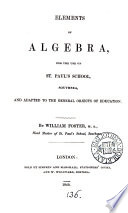 | William Foster - 1840 - 92 pages
...in (B), 9x— 12=96 .-. 9x=108 and «=12 .-. jr=12andy=6. RULE II. In either of the equations, find the value of one of the unknown quantities in terms of the other and of the known quantities : for it, substitute this value in the other equation, and there will result... | |
 | John D. Williams - Algebra - 1840 - 634 pages
...possible values of x and у in integer numbers, suppose the numbers a, b, c, prime to each other. Find the value of one of the unknown quantities in terms of the other. Thus, if the equation be ax — by=c, then by-\-c , . . ' • '.í>y — -c ' x =1-^-1 — ; or, ax-4-by=c,... | |
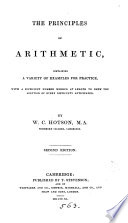 | Wales Christopher Hotson - 1842 - 306 pages
...unknown quantity may be obtained by any of the following methods. First Method. In either equation, find the value of one of the unknown quantities in terms of the other and known quantities, and for it substitute this value in the other equation, which will then contain... | |
 | Francis Henney Smith - Curves, Algebraic - 1842 - 70 pages
...we should, in general, obtain a determinate number of solutions. It would be only necessary to find the value of one of the unknown quantities in terms of the others, in one of the equations, and substitute this value in each of the other equations ; there would... | |
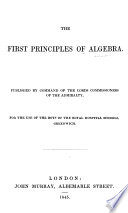 | Admiralty - 1845 - 152 pages
...to 3. The parts are found to be 12 and 18. 67. Rule 2. — From either of the given equations, find the value of one of the unknown quantities in terms of the other quantities ; substitute this value for the same quantity in the other equation ; which equation will... | |
 | Scottish school-book assoc - 1845 - 444 pages
...only the other unknown, from which its value can be found by the previous rules. 74. RULE III. Find a value of one of the unknown quantities in terms of the other from one of the equations, and substitute this value instead of it in the other, from which there will... | |
 | John Radford Young - 1851 - 266 pages
...accomplish the object sought, 56. To solve two simultaneous simple equations: — First Method. Find the value of one of the unknown quantities in terms of the other unknown and the known quantities, from the first equation : that is, proceed exactly as if there were... | |
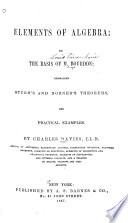 | Charles Davies - Algebra - 1857 - 408 pages
...quantities, when one of the equations is of the second degree, and the other of the first. For, we can find the value of one of the unknown quantities in terms of the other and known quantities, from the latter equation, and by substituting this in the former, we shall have... | |
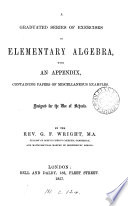 | George Farncomb Wright - 1857 - 98 pages
...simultaneous Equations of the following Exercise may all be solved by deriving, from one of the Equations, the value of one of the unknown quantities in terms of the other, and substituting this value in the second of the proposed Equations. The student will occasionally,... | |
| |